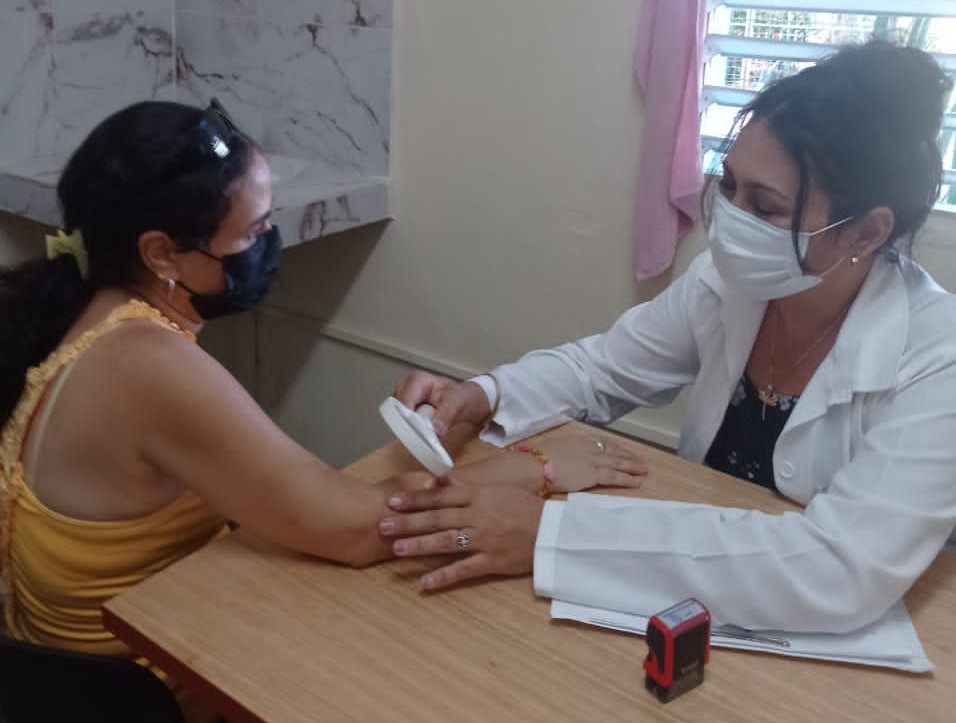CAMAGÜEY.- Mycoses are skin diseases caused by fungi. They can be superficial, subcutaneous or deep, while the former are the most frequent and among them those caused by dermatophytes (filamentous fungi that affect the epidermis and skin appendages), these can be of the genera Trichophyton, Microsporum and Epidermophyton, affect the skin , hair, nails and exceptionally invade deep tissues.
Thanks to Dr. Yadira Susel Zayas Calás, a specialist in Comprehensive General Medicine (MGI) and Dermatology, from the Amalia Simoni Surgical Clinical Hospital, in this city, we learned details about these ailments caused by fungi, about which we do not know as much as we imagine.
— How does mycosis present?
— There are several clinical forms of the disease, and sometimes patients are surprised when we even disclose their names because there are certain taboos related to them. We have the ringworm of the head or capitis, the ringworm of the beard, the ringworm of the body or corporis, the ringworm of the folds or cruris, the ringworm of the feet, the ringworm of the hands and the ringworm of the nails, and the I repeat this way so as not to miss it.
— Which population group does it affect the most?
— It is presented worldwide. Tinea capis occurs in children (98%) and occasionally in adult women; predominates in a low socioeconomic stratum. Ringworm of the body appears at any age and in both sexes. Ringworms of the groin and feet predominate in adult males.
"Onychomycosis or ringworm of the nails predominates in adult men. Ringworm or mycosis due to dermatophytes are among the 10 main reasons for consultation in primary care and specialized consultations."
— How can it be acquired?
— The infection can be acquired from the environment, from animals or sick people, which implies exposure to the source of contagion, also due to genetic predisposition, and propitious factors, such as: humidity, heat, diabetes, prolonged use of glucocorticoids , if the person wears closed shoes too often, due to poor hygiene or is accustomed to not drying their feet properly; in the hair can be related to styling habits or the use of fixatives or oils.
— Does it have an incubation period or does it come to light right away?
— Incubates for days to weeks.
— Can you differentiate the aforementioned ringworms?
- Of course. Tinea capis is almost exclusive to children; it depends predominantly on the fungi Microsporum canis and Trichophyton tonsurans. The dry variety is manifested by desquamation and "dye hairs", that is, short hairs (2 to 3 mm), thick, brittle, deformed and sometimes with a whitish sheath. Trichophytic tinea generates diffuse alopecia with small, irregular plaques, interspersed with healthy hairs; affected hairs resemble gunpowder grains (black dots). Microsporic tinea causes one or a few well-circumscribed, rounded pseudo alopecic areas (plaques) with the tinya hairs cut at the same level. They give the impression of having been "mowed" with a lawn mower.
"Ringworm of the body, circinate herpes or glabrous or glabrous skin tinea, may be caused by the fungi M. canis, T. rubrum, T. tonsurans, T. mentagrophytes, and E. floccosum. There is erythema (skin disorder that occurs when there is excess blood flow due to vasodilation) and scales in rounded plates, with active vesicular edges, with itching.The population commonly and erroneously calls it herpes or 'instep'.
Ringworm of the groin (tinea cruris or Marginalized Hebra eczema) occurs in the inguinofemoral regions and perineum; sometimes it extends to the abdomen and buttocks and rarely to the scrotum and penis. chronic evolution with intense itching.It is frequent in hot areas and in those who remain seated for a long time.It depends on the fungi T. rubrum, E. floccosum and T. mentagrophytes.
"These same fungi cause ringworm of the feet (tinea pedis or athlete's foot), which mainly affects adult men, but also women and children; it is located in the interdigital folds, soles, and edges of the feet; it can cause cracks , fissures, desquamation, vesicles, blisters and scabs or is manifested by areas of hyperkeratosis.
"Ringworm of the nails, affects the nails of the hands and feet, manifests itself by thickening, brittleness, striations, yellowish or dark brown coloration and with a predominance of involvement of the free or distal edge of the nail, predisposes to trauma, maintained humidity in certain professions such as cooks, cleaners, and those with diabetes mellitus and autoimmune diseases.
— What advice do you have for those with symptoms?
- Mycoses or diseases caused by fungi are very frequent in our environment, which is why it is essential that the population go to a specialist for their symptoms and, something very important, that they not self-medicate.
Translated by Linet Acuña Quilez



